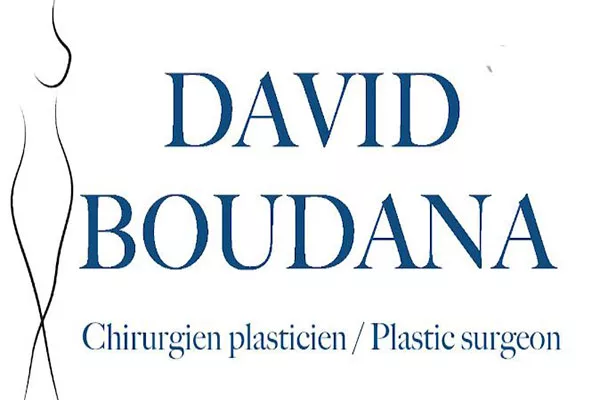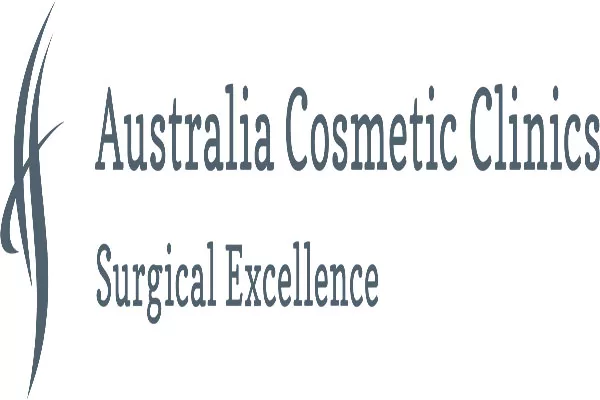As a petite woman, getting a tummy tuck can be a daunting decision. However, it can also be a life-changing one. If you’re considering a tummy tuck (abdominoplasty), you may be wondering what the process will be like for someone with a smaller frame. It’s important to do your research and know what to expect before going under the knife.
In this article, we’ll explore the experiences of petite women who have undergone a tummy tuck. We’ll discuss the potential benefits, risks, and challenges that come with this procedure for someone with a smaller body type. Additionally, we’ll provide tips for choosing a surgeon and preparing for your tummy tuck. So, if you’re considering a tummy tuck and want to learn more, keep reading!
What is a Tummy Tuck?
A tummy tuck (abdominoplasty) is a surgical procedure that removes excess skin and fat from the abdominal region. During the procedure, the surgeon will make a horizontal incision across the lower abdomen and remove any excess tissue. They may also tighten the underlying muscles and reposition the belly button for a more natural-looking result.
Tummy tucks are typically recommended for individuals who have lost a significant amount of weight or have undergone multiple pregnancies. It can also be a good option for those who have excess skin and fat in the lower abdomen due to genetics or aging.
While a tummy tuck can provide significant aesthetic benefits, it is a major surgery that requires a significant recovery period. Candidates should be in good overall health and have realistic expectations for the results.
Tummy Tuck for Petite Women
When it comes to tummy tucks, petite women may have some unique considerations to keep in mind. While the surgery itself is similar regardless of body size, there are a few factors that can impact the results and recovery process for smaller individuals.
Here are some things to consider if you’re a petite woman considering a tummy tuck:
- Proportions: Petite women may have shorter torsos, which can impact the positioning of the belly button and the overall look of the abdomen after a tummy tuck. It’s important to choose a surgeon who understands how to create natural-looking proportions for smaller frames.
- Incisions: Depending on the amount of excess skin and fat, the incision for a tummy tuck may need to be longer for petite women. This can impact scarring and recovery time.
- Recovery: Petite women may have less overall tissue and fat, which can impact the amount of swelling and bruising after surgery. However, they may also have less body mass to support the healing process, which can make recovery more challenging.
It’s important to talk to your surgeon about these factors and any other concerns you may have before deciding to undergo a tummy tuck. Your surgeon can help you understand what to expect based on your individual body type and tell you what steps you can take to optimize your results.
Choosing a Surgeon
Choosing the right surgeon is essential for a successful tummy tuck regardless of body size. However, when it comes to petite women, it’s especially important to find a surgeon who is experienced in working with smaller frames.
Here are some tips for choosing a tummy tuck surgeon:
- Research Credentials: Look for a surgeon who is board-certified in plastic surgery and has experience in performing tummy tucks. Check their credentials and reviews to ensure that they have a good reputation.
- Check Experience: Ask the surgeon about their experience working with petite women and ask to see before and after photos of previous patients with similar body types.
- Schedule a Consultation: Schedule a consultation with the surgeon before making a decision. This will give you the opportunity to ask detailed questions, discuss your goals and concerns, and get a sense of the surgeon’s expertise and communication style.
- Pay Attention to Communication: Your surgeon should be willing to answer your questions thoroughly and in a way that you understand. They should also be able to explain the risks and benefits of the procedure and help you set realistic expectations for the results.
By taking your time to research and choose the right surgeon, you can increase your chances of having a successful tummy tuck.
Preparing for Surgery
Preparing for a tummy tuck involves several important steps regardless of body size. By taking the necessary precautions, you can help ensure a successful procedure and recovery.
Here are some tips for preparing for a tummy tuck:
- Stop Smoking: Smoking can increase the risk of complications during surgery and slow down the healing process. It’s important to quit smoking at least two weeks before your surgery.
- Get in Good Health: Make sure that you are in good overall health before surgery. This may include losing weight, getting regular exercise, and managing any chronic health conditions.
- Arrange for Help: You will need someone to drive you to and from surgery and to take care of you during the initial recovery period. Make arrangements with a friend or family member to help you during this time.
- Avoid Certain Medications: Certain medications, such as aspirin and ibuprofen, can increase the risk of bleeding during surgery. Make sure to avoid these drugs for at least two weeks before surgery.
- Follow Pre-Op Instructions: Your surgeon will provide you with detailed instructions on how to prepare for surgery. Make sure to follow these closely to ensure the best possible outcome.
By following these tips and working closely with your surgeon, you can feel confident and prepared for your tummy tuck procedure.
What to Expect During Surgery
During a tummy tuck, you will be given general anesthesia to ensure that you are comfortable and pain-free throughout the procedure. The surgery itself generally takes between two and four hours, depending on the extent of the work that needs to be done.
Here’s what to expect during a tummy tuck surgery:
- Incision: The surgeon will make a horizontal incision across the lower abdomen, typically just above the pubic area. The length of the incision will depend on the amount of excess skin and fat that needs to be removed.
- Tissue Removal: The surgeon will separate the skin from the abdominal muscles and remove any excess tissue. They may also tighten the underlying muscles to create a flatter, more toned appearance.
- Reposition Belly Button: In some cases, the surgeon may need to reposition the belly button for a more natural-looking result.
- Closure: Once the excess tissue has been removed and the muscles tightened, the surgeon will close the incision using sutures or surgical staples.
- Bandages and Drains: The surgical site will be bandaged and you may have temporary drains to remove excess fluids. You will also be placed in a compression garment to reduce swelling and support the healing process.
After the surgery, you will be taken to a recovery room where you will be closely monitored as you come out of the anesthesia. Depending on the extent of the surgery, you may need to spend one or more nights in the hospital before going home.
Recovery and Aftercare
Recovery after a tummy tuck can take several weeks to several months. The extent of your recovery will depend on your individual body type and the extent of the surgery.
Here are some general tips for a successful recovery:
- 1. Follow Post-Op Instructions: Your surgeon will provide you with detailed instructions on aftercare, including how to care for the incision and when to schedule follow-up appointments. Make sure to follow these closely to ensure the best possible outcome.
- Take it Easy: Rest as much as possible during the initial recovery period, usually about two weeks. Avoid strenuous exercise or lifting heavy objects until you get clearance from your surgeon.
- Wear Compression Garments: You will be provided with a compression garment to wear during the recovery period. This will help to reduce swelling and support the healing process.
- Eat a Healthy Diet: Eating a healthy, balanced diet can help promote healing and reduce the risk of complications. Make sure to get plenty of protein, vegetables, and fluids.
- Manage Discomfort: You may experience some discomfort or pain during the recovery period. Your surgeon will provide you with medication to help manage this, and you should follow the dosage instructions carefully.
By following these tips and working closely with your surgeon, you can help ensure a successful recovery and achieve the best possible results from your tummy tuck surgery.
Potential Risks and Complications
Like any surgical procedure, a tummy tuck comes with potential risks and complications. It’s important to be aware of these before making the decision to undergo surgery.
Here are some potential risks and complications of a tummy tuck:
- Infection: Infection is a risk with any surgical procedure. Make sure to follow your surgeon’s post-operative instructions closely and alert them if you experience any signs of infection, such as fever or redness at the surgical site.
- Excessive Bleeding: Excessive bleeding can occur during or after surgery, and may require additional treatment or surgery to correct.
- Seroma: A seroma is a fluid-filled pocket that can develop under the skin after surgery. This can be uncomfortable or even painful, and may require draining.
- Scarring: While incision scars are common after a tummy tuck, the extent of scarring can vary based on individual factors such as skin type and healing ability.
- Unsatisfactory Results: While a tummy tuck can provide significant aesthetic benefits, it’s important to have realistic expectations for the results.
By working closely with your surgeon and following post-operative instructions carefully, you can help minimize the risk of complications and achieve the best possible results from your tummy tuck.
Conclusion
A tummy tuck can be a life-changing procedure for many individuals, including petite women. While there are some unique considerations for smaller body types, the surgery itself is similar regardless of size.
If you’re a petite woman considering a tummy tuck, it’s important to do your research, choose a qualified surgeon, and follow all pre- and post-operative instructions. Recovery may take several weeks or months, but with patience and proper care, you can achieve the best possible results.
As with any surgical procedure, there are potential risks and complications to be aware of. It’s important to have realistic expectations and be prepared to follow through with aftercare instructions to minimize the risk of complications.
If you’re considering a tummy tuck, speak with a qualified plastic surgeon to learn more about the procedure and whether it is right for you. With the right information and guidance, you can make an informed decision that will benefit your health and well-being for years to come.
Additional Resources
If you’re considering a tummy tuck or just want to learn more about the procedure, there are a variety of resources available to you. Here are a few additional resources to check out:
- American Society of Plastic Surgeons: The ASPS is a professional organization for plastic surgeons that provides information on tummy tucks and other cosmetic procedures.
- RealSelf: RealSelf is an online community where people can share their experiences with cosmetic procedures, including tummy tucks.
- Healthline: Healthline provides information on the benefits, risks, and recovery process for tummy tucks.
- WebMD: WebMD offers a comprehensive overview of tummy tucks, including information on the procedure, recovery, and potential risks and complications.
By utilizing resources like these, you can learn more about tummy tucks and make an informed decision about whether or not the procedure is right for you.
References:
1. American Society of Plastic Surgeons. (n.d.). Tummy Tuck. Retrieved August 5, 2021, from https://www.plasticsurgery.org/cosmetic-procedures/tummy-tuck
2. American Society of Plastic Surgeons. (n.d.). Find A Plastic Surgeon. Retrieved August 5, 2021, from https://www.plasticsurgery.org/find-a-plastic-surgeon
3. RealSelf. (n.d.). Tummy Tuck. Retrieved August 5, 2021, from https://www.realself.com/tummy-tuck
4. Healthline. (2021, January 28). Tummy Tuck: Procedure, Benefits, Cost, and Recovery. Retrieved August 5, 2021, from https://www.healthline.com/health/tummy-tuck
5. WebMD. (n.d.). Tummy Tuck (Abdominoplasty) Cosmetic Surgery. Retrieved August 5, 2021, from https://www.webmd.com/beauty/cosmetic-procedures-tummy-tuck#1







